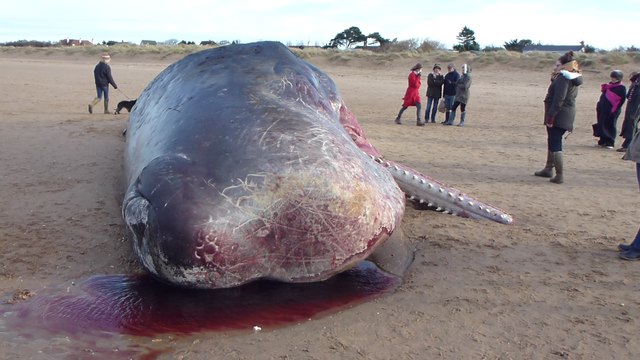Dead marine life is on the rise. The carcass of yet another humpback whale washed up on the shore of British Columbia’s northern coast last week. This is the fourth humpback whale to be found dead in Columbia’s coastal waters.
The Department of Fisheries and Oceans is attempting to determine whether the four humpback whale deaths are related. Necropsies were performed on two of the sea creatures. It may take weeks to determine the cause of death. Entanglement with fishing gear is often the culprit for whale deaths.(1)
